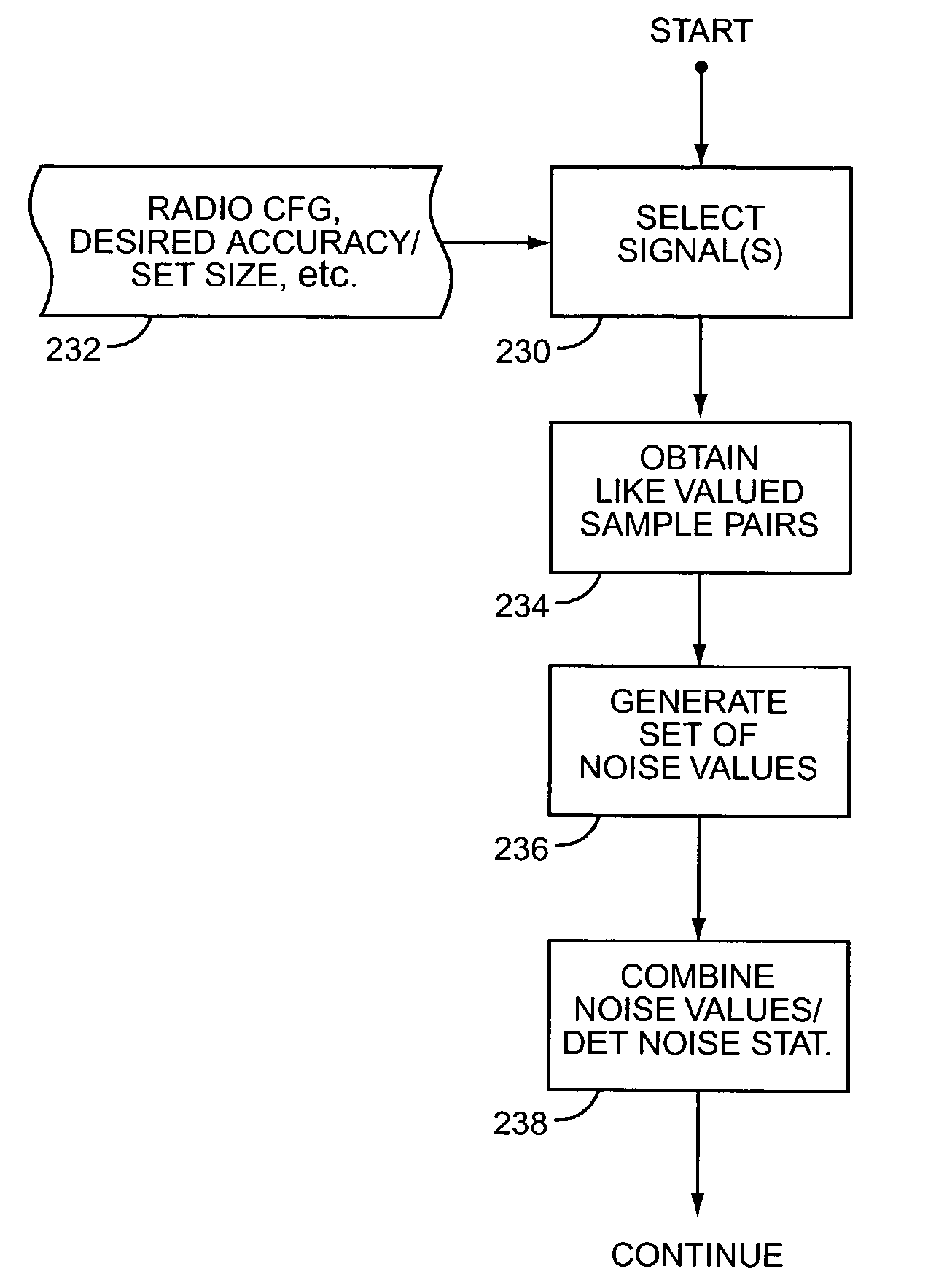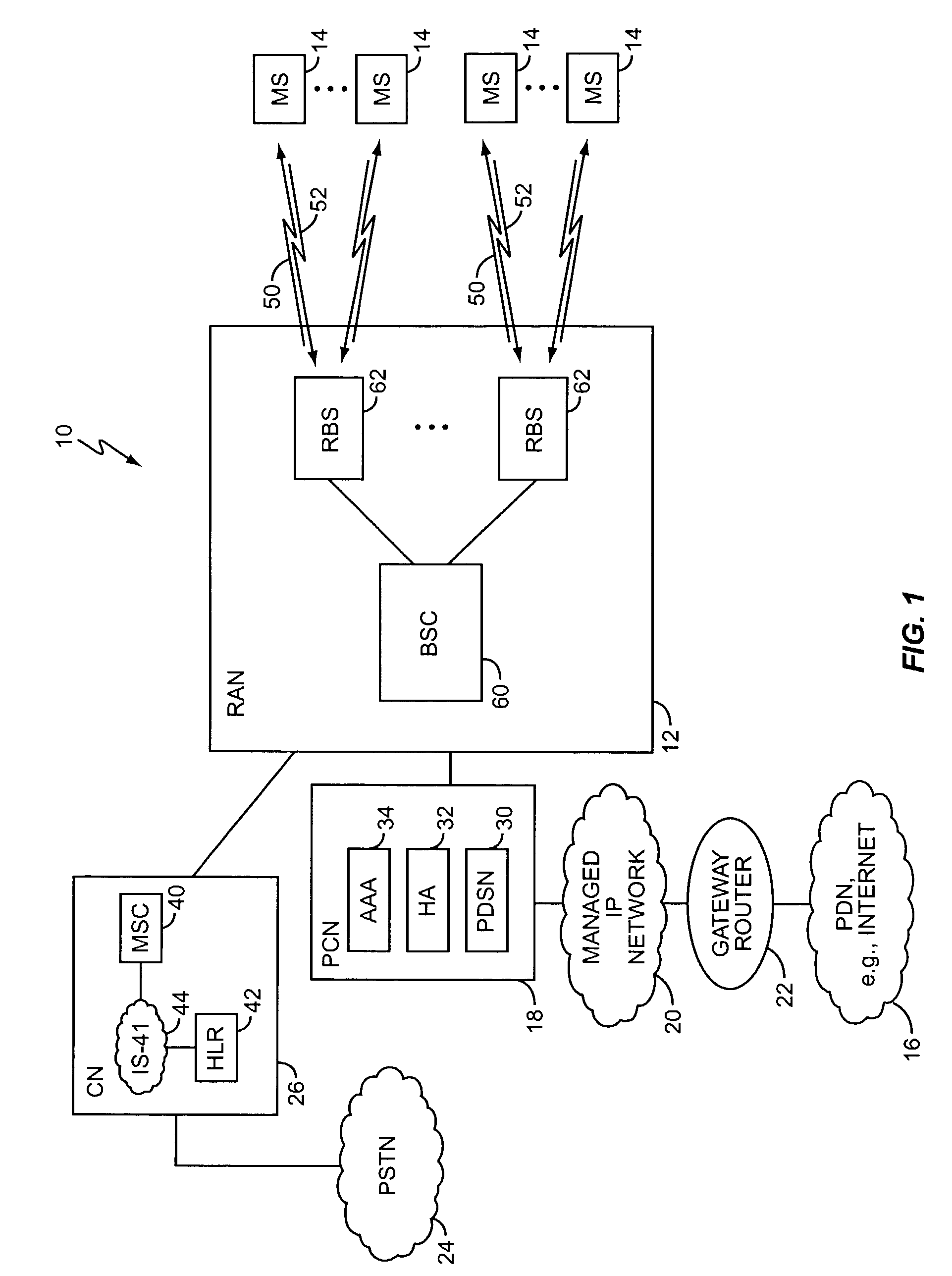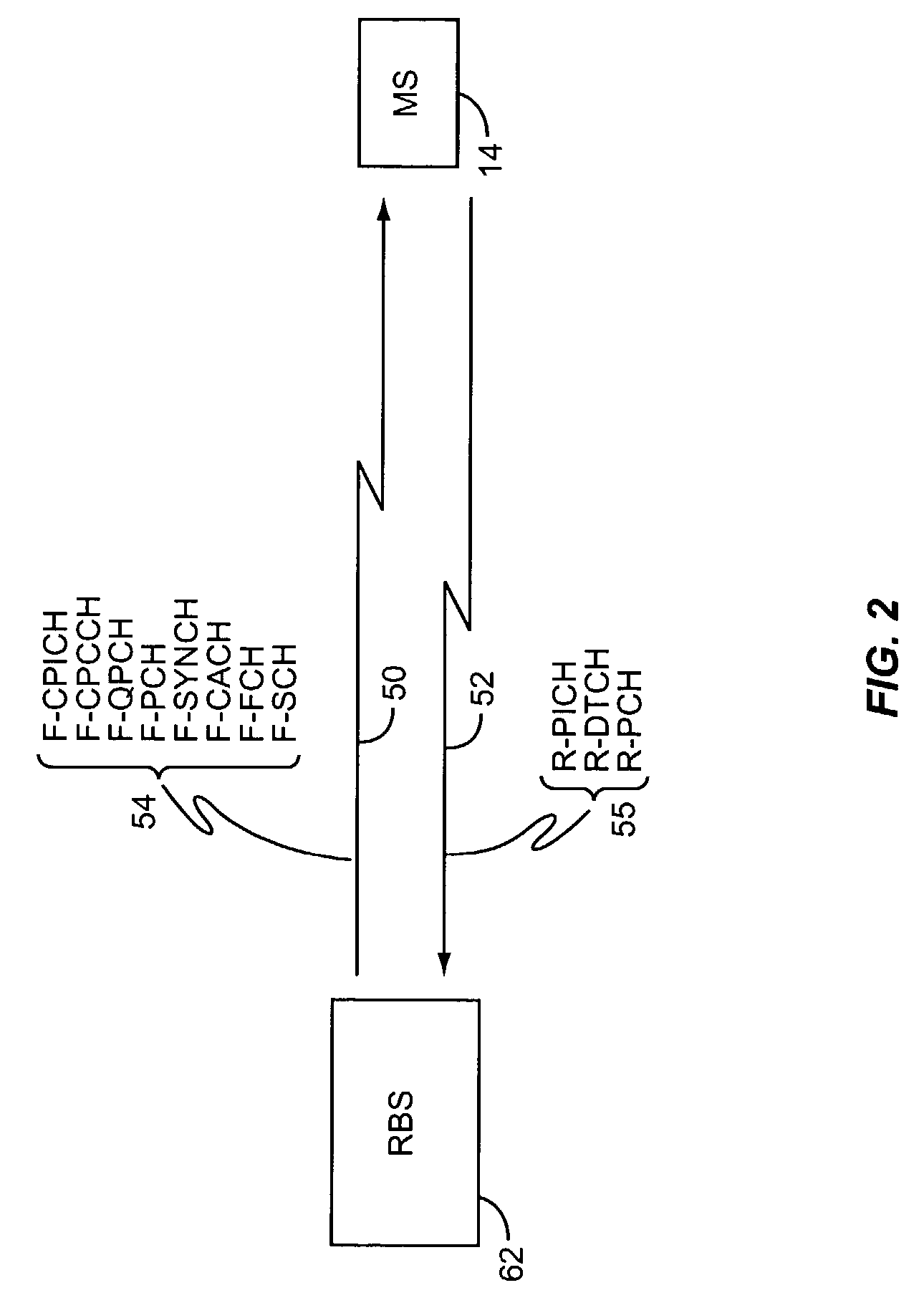Signal-to-noise ratio estimation of CDMA signals
a signal and signal-to-noise ratio technology, applied in the field of wireless communication networks, can solve the problems of reducing the capacity of the largest possible number of mobile stations to serve the greatest possible number of mobile stations, unnecessarily increasing interference at surrounding base stations, and excess power on the reverse link unnecessarily waste power at mobile stations. , to achieve the effect of enhancing the cancellation of deterministic signal components, reducing the separation of samples, and high confiden
- Summary
- Abstract
- Description
- Claims
- Application Information
AI Technical Summary
Benefits of technology
Problems solved by technology
Method used
Image
Examples
Embodiment Construction
[0027]FIG. 1 illustrates an exemplary wireless communication network 10, which provides a framework for discussing the present invention. While the illustrated network 10 depiction of network is generally consistent with cdma2000 wireless network standards, those skilled in the art should understand that the present invention is not limited to such networks and may be practiced in a variety of other network types, such as those based on Wideband CDMA (WCDMA) standards.
[0028]Radio Access Network (RAN) 12 of network 10 communicatively couples one or more mobile stations 14 to other communication networks. Here, RAN 12 supports packet-data communication by coupling mobile stations 14 to Packet Data Network (PDN) 16, e.g., the Internet, through a Packet Core Network (PCN) 18, which is associated with a managed IP network 20 and gateway router 22. RAN 12 supports circuit-switched applications, such as traditional voice and facsimile applications by coupling mobile stations 14 to the Publ...
PUM
 Login to View More
Login to View More Abstract
Description
Claims
Application Information
 Login to View More
Login to View More - R&D
- Intellectual Property
- Life Sciences
- Materials
- Tech Scout
- Unparalleled Data Quality
- Higher Quality Content
- 60% Fewer Hallucinations
Browse by: Latest US Patents, China's latest patents, Technical Efficacy Thesaurus, Application Domain, Technology Topic, Popular Technical Reports.
© 2025 PatSnap. All rights reserved.Legal|Privacy policy|Modern Slavery Act Transparency Statement|Sitemap|About US| Contact US: help@patsnap.com



